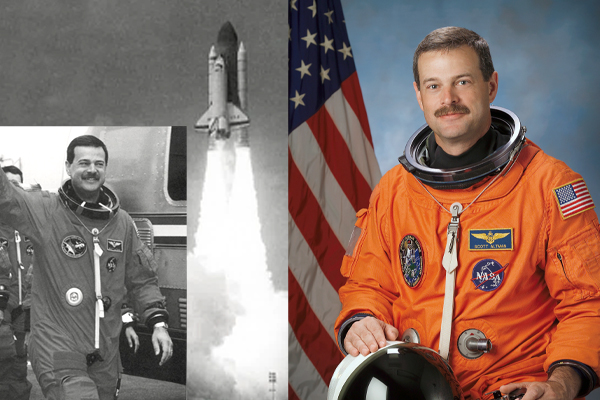Always Changing, Always Growing
Find tales of new beginnings, seasons of change and growth, and the evolution of a community that embraced opportunities, overcame challenges, learned from mistakes, and strove to create a better future for generations to come. Our area’s story, like many Midwestern river towns, began long before the first log cabin was built. But at the core of it are stories of people who helped shape our community and nation. Below is a timeline of some of the most notable tales, dating back more than 200 years. Some even include historic sites and markers that you can still visit today.
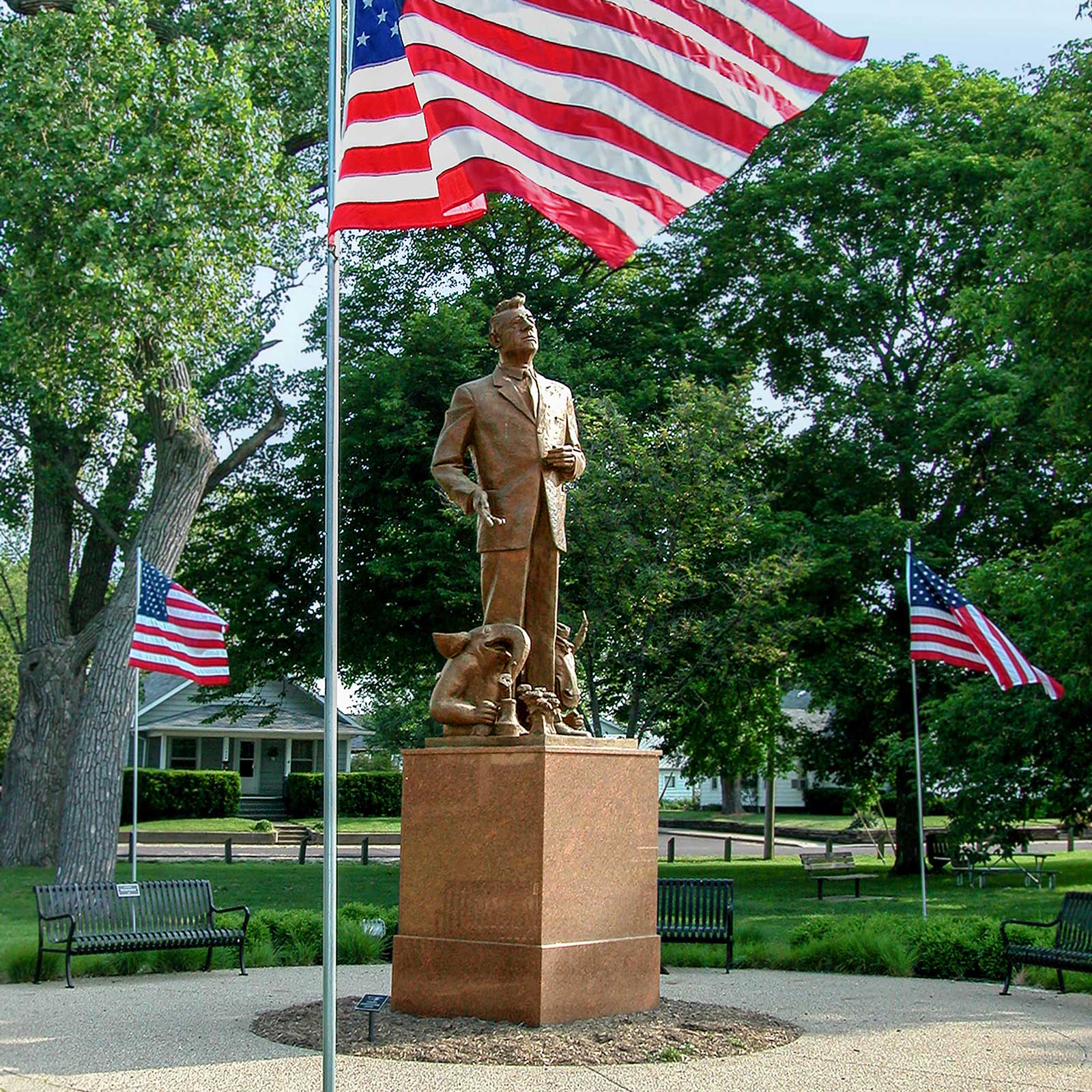
1680
Robert De La Salle, along with a fleet of canoes and 33 men, became one of the first European explorers to visit the area after constructing a winter refuge. The area was also frequently visited by travelers and indigenous people during the early days as they used the river for transportation, water, and fishing.
1824
Farmer Jonathan Tharp built a small log cabin in 1824 on the high east bank of the Illinois River. He soon encouraged his friends and other family members to follow. Tharp’s log cabin was located south of Chief Shabbona’s large Native American village. The village was home to Kickapoo, Chippewa, Ottawa, and Potawatomi people and was situated along Gravel Ridge near the eastern shore of Pekin Lake in northwest Pekin. Tharp’s log cabin was south of Shabbona’s village at a spot that is now the foot of Broadway.
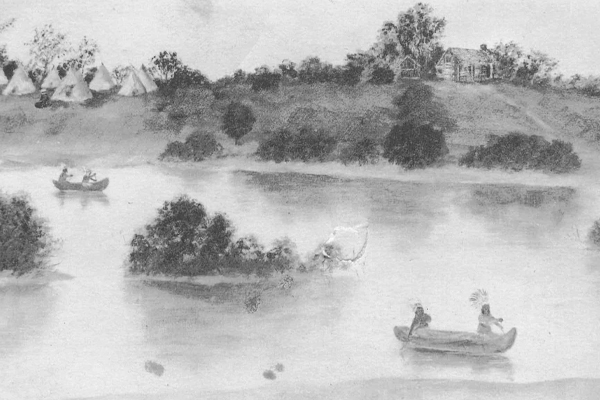
1827
County Surveyor William Hodge laid out what was to become Pekin. He called it “Town Site” indicating the land was suitable for settlement. Auction of the town plat and site was held in Springfield, IL. The village site was awarded to Major Isaac Perkins, Gideon Hawley, William Haines, and Major Nathan Cromwell. Cromwell and his wife, Ann Eliza Cromwell, selected the name of the city, Peking or “Pékin”, the French spelling.
1831-1849
Pekin built its first school in 1831 and first post office in 1832. By 1837, three stores, two taverns, a church, a ferry service, and a railroad. Steamboat trade was a growing factor in the local economy. By 1849, the population swelled to 1,500. Residents unanimously agreed to organize under a city charter and elected their first mayor, Bernard Bailey. Read more about Bailey’s story and a copy of the federal letters patent confirming Bailey’s purchase of land in Tazewell County signed by President Andrew Jackson.
1850-1879
Industry continued to take root in the community with a wagon maker, a manufacturer of reapers, a packing plant, and a distillery. As the years when on, the town added a canning factory, marble works, an egg carton maker, a gun stock factory, iron and brass castings, a steam generator factory, an ornamental vase factory, and an organ manufacturer that was known around the world.
One notable business owner during this time was Gerson Bloom, a Polish immigrant, who ran a downtown tailoring and clothing store at the northeast corner of Third and Court streets. While Gerson Bloom didn’t see huge financial success in his life, his son Solomon Bloom, who was born in Pekin, played an influential role in our nation’s history. Bloom served more than 13 terms in Congress and was one of the delegates at the 1945 convention that established the United Nations. The opening words of the UN’s Charter, “We, the Peoples of the United Nations,” were proposed by him.
Late 1800s – Early 1900s
Pekin’s railway and access to the river also made shipping convenient and lucrative for many. Pioneer photographer Herbert Cole described Pekin as “one of the wealthiest and most fertile in Illinois” in his 1899 publication, “Cole’s Souvenir of Pekin, Ill.” He praised Pekin for its system of railroads, its shipping facilities, and its “mineral springs, the best water in the state.”
Coal mining and brick manufacturing emerged as two prominent industries in the community. Local mining companies generated more than a million tons of coal from the 1880s to the 1930s and area clay created the ideal material for bricks.
Jansen & Zoeller, a key brick manufacturer that was located on Pekin’s East Bluff by Reservoir Road, supplied millions of bricks used to build many of Pekin’s early businesses, residences, and roads and became one of the most prominent road-paving companies in the state. They are credited with building the first state highway in 1919, the first paved load road in Pekin that carried coal to the trains, and many other notable roads throughout the state. Some of Pekin’s early brick roads, like Buena Vista Street, are still in use today.
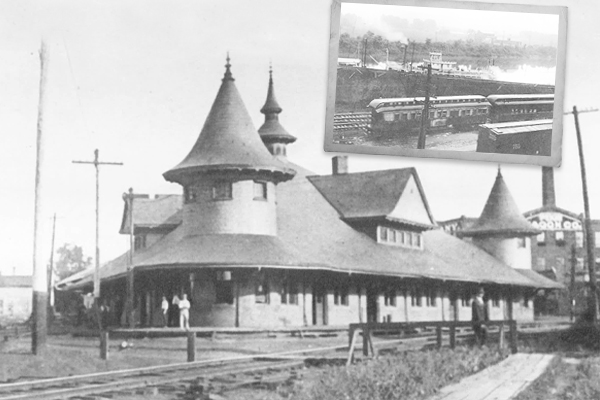
1933 – 1960
Everett Dirksen, a Pekin native and longtime resident, served on the Pekin City Council from 1927-1931 before he was elected to represent Central Illinois in the U.S. House of Representatives, where he served eight terms. In 1950, Dirksen was elected to the U.S. Senate and served as Senate Minority Leader from 1959-1969. He helped pass seminal legislation like the Civil Rights Act of 1964 and backed the Voting Rights Act of 1965 and the Civil Rights Act of 1968. The Dirksen Congressional Center on Broadway is home to an extensive collection of Dirksen’s work and life.
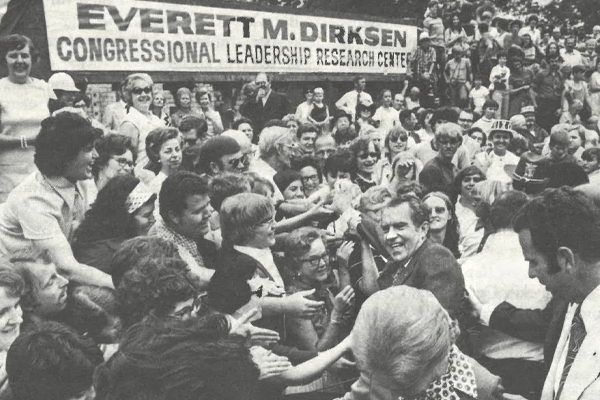
1973
Pekin hosted its first annual Marigold Festival in memory of Sen. Dirksen, who was known for his fondness for the common marigold. When political discussions became tense, he lightened the atmosphere by campaigning to have the marigold named the national flower. Although it never succeeded, Pekin now identifies itself as the “Marigold Capital of the World” as a nod to him. The tradition continues every September as Art in the Park, the Marigold parade, and numerous other treasured activities take over Pekin. Learn more about this event.
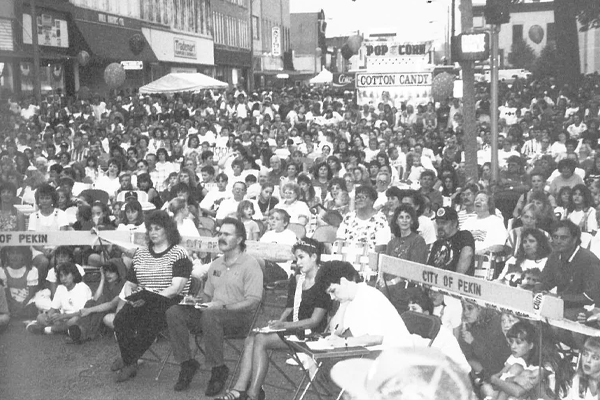
1990s – present
Pekin continues to focus on growth and development on being a great place to live, work, and play. The addition of the Riverway Business Park brought in many new businesses. A decades-long project of revitalizing our downtown district has brought many new local restaurants, boutiques, and shops. Our park system continues to be one of the best and largest in Illinois with our very own DragonLand Water Park, Veterans Memorial Arena, and thousands of acres to explore, drawing in people from across Central Illinois and beyond.
Nance Legins-Costley Story
Her Story
Nance Legins-Costley was born on December of 1813 in Kaskaskia, Illinois . She was sold in 1827 in Springfield to Nathan Cromwell for $151, but she refused consent to the contract and was punished severely. When she was only 14 she challenged her servitude in court, but the Illinois Supreme Court ruled her the ward and servant of Cromwell, who brought her to Pekin in 1829. Cromwell later sold Nance to David Bailey of Pekin, who refused to pay the promissory note after Cromwell’s death in 1836 since Nance said she was free. In the 1841 Illinois Supreme Court case Bailey v. Cromwell, Bailey’s attorney Abraham Lincoln argued successfully for the freedom of Nance and her children. Nance had married Benjamin Costley in Pekin on October 15, 1840 and on July 19, 1849, Nance purchased the land for their first home, becoming the first and only formerly enslaved woman to own land in Pekin. After 50 years in Pekin, she and her family moved to Peoria, where Nance died in 1892. Nance, her husband Ben and their son Leander were interred in the former Moffatt cemetery in Peoria.

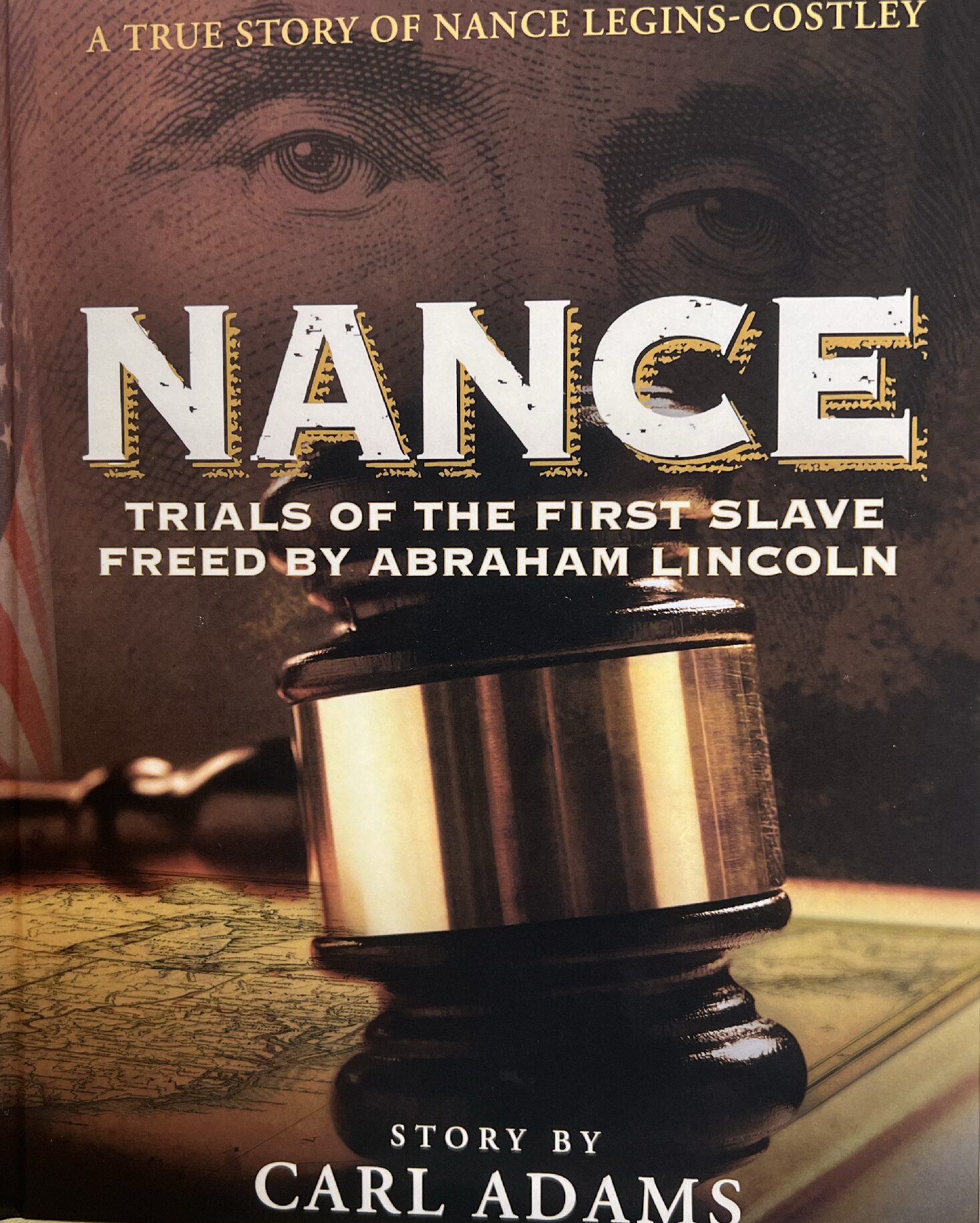
Interesting Facts
Pekin: The Tale of Two Cities
Pekin’s unusual mixture of triangular intersections, jogs, and other odd features near the downtown area came about because it was originally two rival towns. The Tharps, thought to be the first settlers to the area, laid out a plan for a town they called “Cincinnati,” laid out in a north-to-south orientation, bounded by the Illinois River and the present streets of Broadway, McLean, and Main. Unfortunately, there was no interest in their lots.
The area continued to grow, however, and the town of Pekin was laid out and surveyed a second time by County Surveyor William Hodge in 1829. His plan followed the Illinois River, resulting in a northeast-to-southeast grid. In 1831, both plans were used by rival real estate developers. This resulted in interesting streets and intersections such as Fifth and Eighth streets.
Pekin’s Name & How It Came To Be
The name “Pekin” was chosen by Mrs. Nathan Cromwell, wife of one of the city’s early settlers. Many people have assumed the city was named after the Chinese city Peking (now Beijing), but this has never been documented.
A Feminine Inspiration
Mrs. Cromwell also named several of the city’s east-west streets after female relatives and friends of the original settlers including “Ann Eliza” Street after herself. Learn how Matilda, Catherine, Henrietta, Carolyn, Margaret and more are tied to the women pioneers of Pekin.
Walk Where Lincoln Walked
Abraham Lincoln frequented Pekin before he became president and was often at the Tazewell County Courthouse on legal matters. His signature appears on many documents that originated in our county. Learn more about some of Lincoln’s stops in Pekin.
The Tragic Ending of Steamboat Columbia
One of the worst disasters in the history of United States inland navigation happened near Pekin’s shores. At midnight Friday, July 5, 1918, the excursion steamboat Columbia sailed to Pekin from Peoria. The boat struck a sand bar and sank into the Illinois River near Wesley City (present-day Creve Coeur). Onboard were 496 passengers, many of whom were from Pekin. Eighty-seven passengers, mostly women and children, drowned in the submerged wreckage.
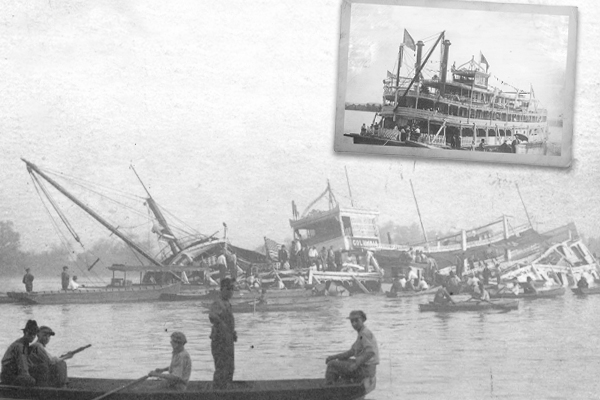
Local Hero Reaches Space — and the Big Screen
Pekin native Scott D. Altman is a decorated United States Navy Fighter Officer who has received countless awards for his service to his country. In further service to his country and the advancement of all mankind, Altman was selected to the NASA Astronaut program, where he piloted two space shuttle missions and commanded two additional missions, logging a total of over 51 days in space. Scott is also known for his role as an F-14 pilot in the film Top Gun, during which he buzzed the tower for one of the film’s most memorable scenes.
